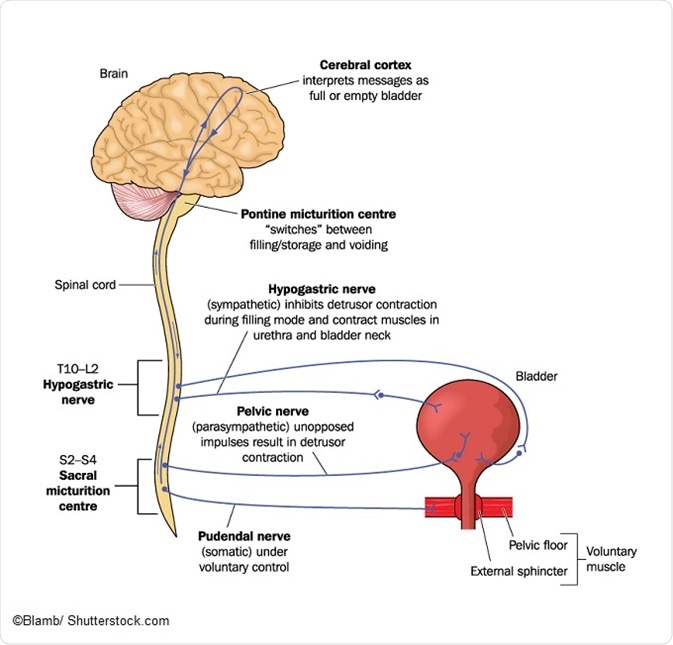Site Under Development, Content Population and SEO, Soft Launch 1st January 2020
Neurogenic bladder is a loss of control of the bladder caused by nerve damage. The underlying cause of the nerve damage can be any of a variety of conditions, including spinal injury, diabetes, pelvic surgery, neurological disease, or others.
Characteristic symptoms of neurogenic bladder include recurrent urinary tract infections, urine leakage, overactive bladder, frequent urination, urinary retention, and underactive bladder. Early diagnosis of neurogenic bladder is important, because the disorder can have serious complications if it is left untreated, including a complete impairment of the kidney function.

Since treatment approaches vary in dependence of the underlying etiology, there is a need for a thorough diagnostic approach. Urodynamic studies can help to determine the exact type of neurogenic bladder disorder that is present, and can be repeated as needed. Following the diagnosis, a management plan should be made and patients should be monitored frequently for progression of the condition or complications.
In a meticulous evaluation algorithm of neurogenic bladder, a physical exam and a number of tests will be carried out. The appointment usually begins with a complete history - including prior genitourinary conditions, surgeries, voiding history, urinary tract complaints, and medication intake.
Medications that can affect urination include sedatives, antidepressants, opiates, antipsychotics, antihistamines, anticholinergics, antispasmodics, alpha adrenergic agonists and antagonists, as well as calcium channel blockers. The patient may be asked to keep a urinary diary including fluid intake, voiding pattern, and any problems encountered during each day.
A physical exam will focus on the anatomy of the pelvic organs and neurologic system. The neurologic exam includes mental status, reflexes, strength, and sensation. Issues such as prostate enlargement or bladder prolapse are significant in the exam.
Furthermore, any issues with cognition, hand strength, coordination, joint contractures, sexuality, and mobility are evaluated. Patients with spinal cord injury are evaluated for the extent of the injury and for rectal sensation, voluntary rectal tone, and bulbocavernosus reflex.
When assessing neurogenic bladder, a panel of lab tests including urinalysis, urine culture, serum blood urea nitrogen (BUN) and creatinine, and creatinine clearance are ordered. In addition, renal clearance tests, 24-hour urine creatinine clearance, and isotope studies are used to assess kidney function in patients with neurogenic bladder.
Post-void residual urine volume is measured by transurethral catheterization after voiding. Post-void volume can indicate whether there is a problem emptying the bladder completely. It also determines how frequent the patient needs to be catheterized to prevent overdistension of the bladder.
An urodynamic evaluation can determine urinary system function. Tests included in such evaluation are:
Urinary flow rate is defined as the volume of urine voided per unit of time. It is dependent on detrusor muscle function and urethral resistance. High flow rates can indicate overactivity of the detrusor, and low flow rates could be caused by a weak detrusor muscle or urinary outlet obstruction.
In addition to urinary flow rate, leak point pressure is also measured. Bladder leak point pressure is the maximum pressure of the detrusor muscle during passive filling of the bladder before a leak occurs.
Lastly, the urethral pressure profile is an assessment of outflow resistance of the urethra. It is usually measured by taking pressure measurements along the length of the urethra using a water-filled catheter connected to a pressure transducer.